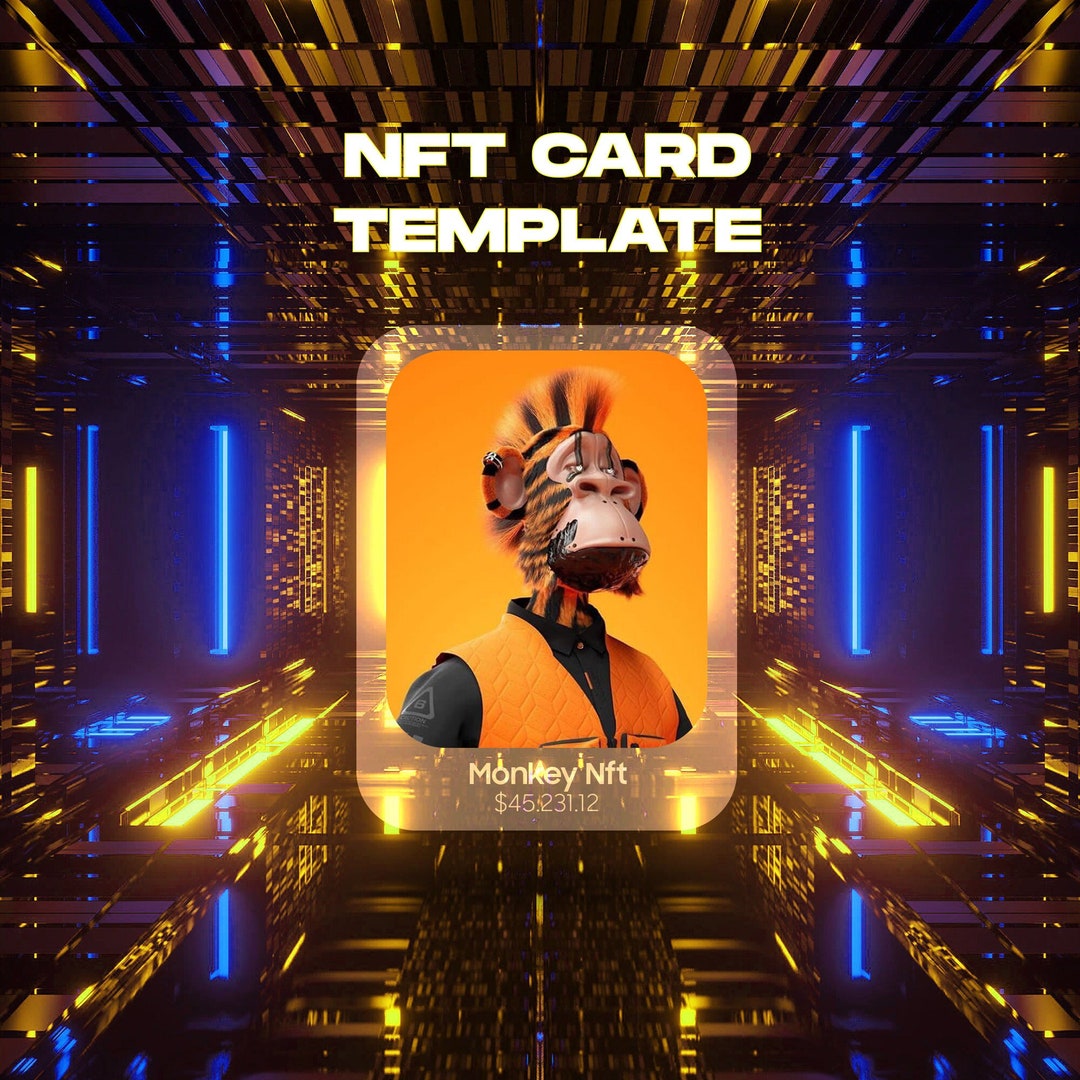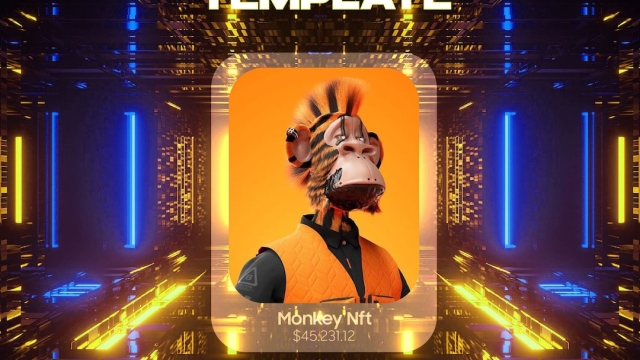
In recent years, the world of art and ownership has been transformed by the emergence of non-fungible tokens, or NFTs. These digital assets have revolutionized the way we think about creativity, providing artists and collectors with new avenues for expression and investment in the digital age. As the leading source for daily NFT, metaverse, and Web3 news, NFTInsider offers insights from industry experts, shedding light on the evolving landscape of this innovative technology.
As we unlock the digital vault, it becomes clear that NFTs are not just a passing trend. They represent a profound shift in how we perceive art, ownership, and value in the digital realm. With their unique ability to establish provenance and authenticity, NFTs hold the promise of creating a more equitable ecosystem for artists and collectors alike. The future of NFTs in art is bright, and it opens doors to exciting possibilities we have yet to fully explore.
The Evolution of NFTs in Art
The journey of non-fungible tokens, or NFTs, in the art world has reshaped how we think about ownership and creativity. Initially met with skepticism, NFTs have emerged as a powerful tool for artists, allowing them to tokenize their work in a way that guarantees authenticity and provenance. This evolution began with digital art but quickly expanded to include various forms of creativity, including music, photography, and video. As artists embraced this technology, they discovered new revenue streams and ways to engage with their audience, fundamentally altering the landscape of artistic expression.
The rise of NFTs has democratized access to art, enabling artists to reach global audiences without the need for traditional galleries or intermediaries. Platforms like OpenSea and Rarible have become bustling marketplaces where creators can showcase their work and collectors can purchase unique pieces directly from the artist. This shift not only empowers creators but also fosters a deeper connection between them and their supporters. Moreover, the ability to create limited editions or one-of-a-kind pieces has introduced an exciting dynamic to the concept of scarcity in the digital realm, making ownership of digital art a coveted status symbol.
As the technology continues to evolve, we will likely see further innovations in how NFTs are integrated into the art market. Collaborations between artists and technologists are leading to interactive and experiential art pieces that challenge traditional norms. Additionally, the potential for smart contracts to facilitate resale royalties ensures that artists can benefit from their work long after the initial sale. The ongoing transformation of NFTs in the art world signals a new era of creativity and ownership, where the potential for innovation is limited only by the imagination of the artists themselves.
NFTs and Digital Ownership
The rise of non-fungible tokens has transformed the concept of ownership in the digital realm. Traditionally, ownership of art and collectibles was often difficult to define and enforce in the digital space, leading to rampant piracy and copyright issues. NFTs solve this problem by providing a method to verify authenticity and ownership through blockchain technology, giving artists and creators unprecedented control over their work. This new model allows digital creators to monetize their art in ways that were previously unimaginable.
As digital ownership becomes more mainstream, the implications for artists and collectors are profound. With NFTs, artists can sell their work directly to consumers without traditional intermediaries, retaining a larger share of the profits. Additionally, the ability to program royalties into the NFT contract means that creators can continue to earn from future sales of their work, ensuring that they benefit from the appreciation of their art over time. This shift empowers artists and allows them to create sustainable revenue streams in a digital economy.
Collectors also enjoy new opportunities in this evolving landscape. Owning an NFT often comes with perks beyond just possessing a digital file, including access to exclusive content, events, or community memberships. This additional layer of value enhances the appeal of digital ownership, turning what was once seen as a simple transaction into a deeper relationship between creators and collectors. As NFTs continue to gain traction, they are redefining how society perceives ownership and value in the digital age.
Challenges Facing NFT Adoption
Despite the growing interest in NFTs, several challenges hinder wider adoption. One of the primary obstacles is the understanding and awareness of what NFTs are and how they function. Many potential users remain unaware of the technology’s benefits or are confused by the complexities of blockchain. This knowledge gap can prevent both artists and collectors from fully engaging with the NFT market, as they may fear the risks associated with what they don’t understand.
Another significant challenge is the environmental impact associated with NFT transactions, particularly on energy-intensive blockchain networks. Concerns regarding carbon footprints have prompted debates about the sustainability of NFTs. Artists and buyers alike may hesitate to enter the space if they feel their participation contributes negatively to climate change. Addressing these issues through more eco-friendly technologies and practices will be crucial for the long-term viability of NFTs in the art world.
Lastly, the regulatory landscape introduces uncertainty that can deter potential investors and creators from embracing NFTs. As governments around the world grapple with how to classify and regulate digital assets, many stakeholders are left in limbo. This unpredictability can lead to hesitance, as individuals worry about the implications of future regulations on their investments and creations in the NFT space. A clearer, more consistent regulatory framework will be essential for fostering confidence and encouraging wider participation in the NFT ecosystem.
The Role of NFT Insider
NFT Insider plays a crucial role in the ever-evolving landscape of digital art and ownership. As the leading source for daily updates on NFTs, the metaverse, and Web3, it provides invaluable insights that keep both collectors and creators informed. By covering the latest trends, technological advancements, and market analyses, NFT Insider ensures that its readers stay ahead in a rapidly changing environment.
The platform features articles written by industry experts who understand the nuances of the NFT ecosystem. This expertise not only enhances the credibility of the content but also fosters a deeper understanding of the implications of NFTs on the art world. Through interviews, case studies, and opinion pieces, NFT Insider encourages critical thinking and discussion about the future of digital ownership and its impact on traditional art practices.
Moreover, NFT Insider serves as a community hub for enthusiasts, artists, and investors alike. By creating a space for dialogue and sharing experiences, the platform strengthens connections within the NFT community. As the dialogue around digital art and ownership continues to grow, NFT Insider remains a key player in fostering innovation and collaboration in this exciting domain.
Future Trends in NFTs
As the NFT market continues to evolve, we can expect a surge in utility-driven tokens that go beyond mere digital collectibles. Artists and creators are increasingly exploring the integration of NFTs into their work, offering interactive and engaging experiences that enrich the audience’s connection to the art. For example, NFTs may grant access to virtual exhibitions, exclusive content, or even real-world benefits, bridging the gap between the digital and physical realms. This shift towards utility is expected to attract a broader audience and foster long-term relationships between creators and their supporters.
The future of NFTs will also see enhanced collaboration between various industries, with fashion, gaming, and entertainment heavily investing in this technology. Brands are beginning to understand the power of digital ownership and how it can redefine consumer experiences. Collaborations between artists and designers to create limited edition digital wearables or in-game assets are likely to become more common, showcasing the versatility of NFTs. This trend will not only drive innovation but also contribute to the mainstream acceptance of NFTs as a legitimate form of ownership and engagement.
NFT Games
Finally, the sustainability of NFTs is becoming a critical concern, prompting a shift towards more eco-friendly practices. With growing awareness of the environmental impact of certain blockchain technologies, the industry is likely to embrace solutions that reduce carbon footprints, such as transitioning to Proof of Stake mechanisms. As more artists and collectors prioritize sustainability, platforms that focus on responsible minting processes will gain traction. This movement will ensure that NFTs remain a viable option for creators and consumers who are conscious of their environmental impact, paving the way for a more sustainable future in digital art and ownership.
